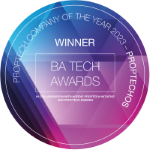RealEstateCore (REC) and Brick Schema are both ontologies designed to model and structure building data, but they focus on different aspects of the built environment. RealEstateCore is primarily oriented toward the real estate domain, encompassing broader aspects of building management, occupancy, and operations. Brick Schema, on the other hand, is more specialized in representing the relationships between building systems and their operational components, such as HVAC, lighting, and control systems. Integrating these two ontologies provides a comprehensive view of both the operational and business aspects of buildings. Here’s how they are typically integrated:
1. Harmonization of Terminology
The integration of RealEstateCore and Brick Schema starts with harmonizing the terms and concepts used in each ontology. While both ontologies model aspects of buildings, their focus areas often overlap with different terminologies. For example, RealEstateCore may refer to “spaces” and “assets” in broader business contexts (e.g., offices, meeting rooms, and tenants), while Brick Schema focuses on the technical systems (e.g., HVAC units, sensors, meters).
In the integration process, mappings are created between concepts that are common to both, ensuring that when RealEstateCore refers to a room or a piece of equipment, Brick Schema’s more detailed representation of the same system or space is accessible. This allows for interoperability, where a system using RealEstateCore to manage space occupancy can communicate with a system using Brick Schema to control the HVAC in that same space.
2. Combining High-Level and Low-Level Data
RealEstateCore focuses on high-level data relevant to business and real estate management, such as occupancy, asset management, leasing, and building performance metrics. Brick Schema models the more granular data about how building systems function, such as sensor data, actuator status, and energy consumption at the device level.
When integrated, RealEstateCore’s business layer can leverage Brick’s granular operational data. For instance, a building manager using RealEstateCore for asset management could access real-time sensor data modeled by Brick Schema to monitor energy use or room temperature. This integration enables high-level management platforms to make decisions based on real-time, system-level data.
3. Linking Physical and Logical Models
Brick Schema excels at modeling the physical components of buildings and their logical relationships, such as how air handling units, thermostats, and sensors interact within an HVAC system. RealEstateCore, on the other hand, offers a more abstract representation of the building and its uses, such as tenants, leases, or office spaces.
By integrating the two ontologies, you can link physical systems with the logical concepts they support. For instance, a “room” in RealEstateCore can be connected to the sensors, actuators, and systems defined in Brick Schema that control and monitor conditions in that space. This creates a cohesive model where both the physical infrastructure (Brick) and the use of the space (REC) are represented and interconnected.
4. Enabling Advanced Use Cases
The integration enables advanced use cases where both business management and operational control are necessary. Some examples include:
- Energy Efficiency: RealEstateCore’s data on occupancy and usage patterns can be combined with Brick Schema’s detailed information on HVAC and lighting systems to optimize energy use based on actual demand.
- Predictive Maintenance: Building management systems using RealEstateCore can tap into Brick Schema’s detailed device-level data to identify potential equipment failures or inefficiencies, allowing for more proactive maintenance schedules.
- Space Utilization: By integrating room occupancy data from RealEstateCore with environmental data from Brick Schema, building operators can optimize space utilization and ensure comfortable conditions based on real-time occupancy and environmental factors.
5. Interoperability with IoT Devices
Brick Schema is heavily used in IoT-based building management systems. By integrating with RealEstateCore, the IoT devices and sensors that Brick models can be contextualized within the broader building management framework provided by RealEstateCore. This allows a building operator to see not only the operational status of IoT devices but also their business impact, such as how a malfunctioning HVAC system affects tenant comfort or leasing agreements.
6. Standardized Data Exchange
Both RealEstateCore and Brick Schema rely on structured, semantic data models. Their integration typically follows standard practices in ontology alignment, where mappings are created between classes and properties from each schema. Tools such as RDF (Resource Description Framework) and OWL (Web Ontology Language) are used to formalize the relationships between these ontologies, ensuring that data can be exchanged and interpreted seamlessly between systems using either REC or Brick Schema.
For instance, a room defined in RealEstateCore might have properties such as occupancy or type of lease, while Brick Schema would add attributes about the temperature sensors or ventilation systems that service that room. By standardizing the way these properties are connected, data can be shared between different systems that use either ontology, allowing for a more holistic view of both the physical and operational aspects of buildings.
7. Enhanced Smart City Integration
Smart buildings are becoming integral to the broader smart city ecosystem. Integrating RealEstateCore with Brick Schema allows building data to flow into city-wide systems more efficiently. FIWARE, a platform for smart cities that integrates context data from various sources, can take advantage of the combined ontology to include not only building management and operational data (through Brick) but also business and real estate-related insights (through REC). This creates opportunities for cross-domain optimization, such as coordinating city-wide energy management efforts based on the real-time status of buildings and their occupants.
Conclusion
The integration of RealEstateCore and Brick Schema provides a powerful framework for managing both the operational and business aspects of buildings. By combining RealEstateCore’s high-level real estate data with Brick Schema’s detailed system-level data, building managers, operators, and city planners can achieve better insights, more efficient operations, and greater interoperability across smart building and smart city platforms.
This collaboration opens up new possibilities for optimized building management, from energy efficiency to tenant satisfaction, as well as the seamless inclusion of building data into the broader smart city ecosystem. The integration ensures that both the physical infrastructure and the business activities within a building are represented in a unified, interoperable way.

Dr. Erik Wallin
Chief Ecosystem Officer, and founder of ProptechOS and RealEstateCore is recognized as a leader in Building Operating Systems (BOS) and making the buildings of the world smarter. He holds an MSc and a Ph.D. in Media and Computer Science from KTH Royal Institute of Technology.
Read his full bio and information here.

